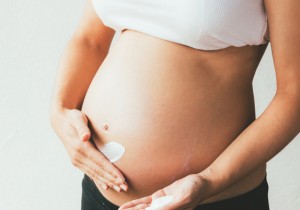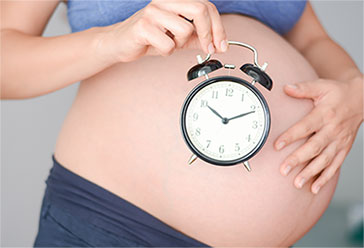

Preeclampsia is a serious medical condition in which hypertension occurs during pregnancy and is related to significant amounts of protein in the urine. It usually occurs in the third trimester of pregnancy approximately, after the 27th week and this condition is thought to happen when the placenta isn’t working properly. It also refers to a set of symptoms instead of any causative factors, and there are many causes for this condition. To know more about this condition, here is some information to help you.
Causes And Risk Factors For Preeclampsia
Pre-eclampsia is a pregnancy complication that has a vague cause. This condition is thought in many cases to be cause by a placenta that becomes hypoxic because it is shallowly implanted in the uterus and it seems that in preeclampsia the placenta does not receive enough maternal blood for its requirements. When this happens, it causes harm to the maternal blood flow, and the result of which is increasing blood pressure. However, the cause of preeclampsia can be due to genetic factors. If you have this, you are more likely predisposed to the condition.
- You are pregnant for the first time
- You had preeclampsia in your previous pregnancy. 1 in every 5 mums has this again
- Your sister or mother had preeclampsia
- Your age is 40 years old and above
- You have had a 10-year and above long gaps between pregnancies
- You’re having twin pregnancy or more
- You were overweight prior to becoming pregnant
- You have a present health problem, such as high blood pressure or renal disease
Preeclamspia Signs And Symptoms
- Persistent headaches
- Dizziness
- Sudden and severe swelling of your hands, feet or face
- Changes in vision. Blurring of vision, light sensitivity and loss of vision
- Pain below your ribs
- Nausea and vomiting
- Unexplained weight gain, usually more than 2 kilograms (5pounds) per week
Diagnosis:
To confirm this condition, certain tests by the doctor or your midwife will be performed. The tests includes blood pressure monitoring and urine test.
Key signs are high blood pressure and presence of protein in the urine (proteinuria). It also includes blood tests, monitoring of foetal development by the doctor and other symptoms that seem to occur with preeclampsia.
Does Preeclampsia During Pregnancy Leads To Other Complications?
If preeclampsia worsens from mild preeclampsia to severe, it begins to impact other body systems. This condition may get more symptoms as the condition sets in. If your health care provider doesn’t know you have preeclampsia, you won’t get the appropriate care and worrying complication could develop.
Eclampsia. This is a serious complication of preeclampsia and according to statistics, only one in 2000 mothers develops this complication. Eclampsia can occur during pregnancy, during birth or even after birth. It happens when the membranes of the brain become aggravate which can later on lead to seizure or convulsion.
HELLP syndrome. This is not a common complication but it can develop before pre-eclampsia has been diagnosed and can occur in late pregnancy or even after giving birth. HELLP means, H-hemolysis, or breaking down of red blood cells; EL-elevated liver enzymes. This is a sign that your liver is not working well; LP-low platelet count. As what the name implies, you may not have enough platelets that are needed for blood clotting.
Other preeclampsia complication includes cerebral haemorrhage (stroke), pulmonary oedema (fluid accumulation in the lungs), liver and kidney failure and blindness
How To Prevent Preeclampsia In Pregnancy?
There is no guaranteed way to prevent preeclampsia. The best way of making sure that neither you nor your baby comes to any danger is to follow these tips:
Before Pregnancy:
- Collaborate with your doctor to lower your blood pressure and will give you advices on the management of preeclampsia.
- Take a weight loss plan through diet and exercise if needed.
- Lifestyle changes like stop cigarette smoking, limiting your salt intake, having a regular exercise, having a losing weight plan can also be helpful.
- Consult your doctor to know how preeclampsia might affect you and your baby during pregnancy and what can he suggest to prevent or lessen the complication problems.
- If having a maintenance medication to control blood pressure, never stop or change your medications on your own. Ask your doctor whether you should stop taking them or change the dosage of the drug. According to research, angiotensin-converting enzyme (ACE) inhibitors and angiotenisin II receptor antagonist should be avoided during pregnancy.
During Pregnancy:
- See your doctor regularly and as soon as possible to work on the changes of your blood pressure and weight.
- Have a regular prenatal check-up.
- Have your blood pressure and urine monitored at home if your doctor suggests you to do so.
- Avoid alcohol consumption and cigarette smoking.
- Ask your doctor about any over-the-counter drugs that you are taking if it can affect your condition.
- If you develop any warning symptoms of preeclampsia. Immediately consult your doctor.
Preeclampsia Treatment
When your blood pressure increases slightly and you are not near the end of pregnancy, have a bed rest to reduce the pressure. If the blood pressure remains normal, pregnancy may be allowed to continue. If you develop signs of preeclampsia, you and your baby will be closely monitored by the doctor. The only cure for preeclampsia is the giving birth of the baby. Sometimes, your health care provider will suggest an early delivery either through induction of labour or a caesarean section.
Pre-eclampsia And High Blood Pressure
According to research, preeclampsia does not necessarily increase a woman’s risk for developing chronic hypertension or other cardiac problems. Women with normal blood pressure, who develop preeclampsia after the 20th week of her first pregnancy, usually go away within about 6 weeks after delivery. Some women may be more likely to develop high blood pressure or other heart-related problems later in life. The effects of preeclampsia during pregnancy vary depending on a lot of different factors. Having early and regular check-up is very helpful for you and your baby.






















